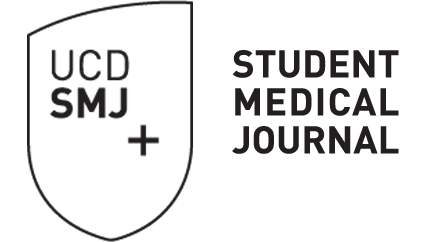REGULATION OF COMPLEMENT SYSTEM USING AUR-1400 and aur-1402
Ethan Waisburg UCD School of Medicine and Medical Science, University College Dublin, Belfield, Dublin 4, Ireland
Article
Introduction
Atypical Hemolytic Uremic Syndrome (aHUS) is a disease that is genetically-mediated and primarily affects kidney function.1 This syndrome can be characterized by a reduced level of circulating platelets (thrombocytopenia), the breakdown
of red blood cells (hemolysis), and acute kidney failure.2 It is estimated that aHUS has an incidence
of approximately 2 cases per 1,000,000/year in
the United States.3 The death rate of the disease
is approximately 2-10% at first episode and approximately 50% of patients have relapses.4
For most aHUS patients, specific mutations that
affect the alternative complement pathway are responsible, such as C3, factor H, factor I, factor
B and thrombomodulin.5 The complement system plays a key role in the innate immune system by lysing pathogens and identifying damaged tissue
and is composed of over 40 membrane and plasma- associated proteins. 1 This system should be precisely regulated to prevent healthy tissue from being damaged. Conditions such as atypical Hemolytic Uremic Syndrome arise from the dysregulation of complement. This dysregulation results in an attack on the cells that line blood vessels in the kidneys which results in the formation of clots, inflammation and could eventually lead to end-stage renal disease.2 AUR-1400 and AUR-1402 are derivatives
of aurin tricarboxylic acid (ATA), which is a molecule that blocks the complement cascade by inhibiting
the activity of the alternative C3 convertase as well as the assembly of the membrane attack complex (MAC; C5b-9). These compounds could potentially restore complement control and may be used as a therapeutic for diseases such as aHUS.
Objective
The goal of this study is to determine the complement blocking capacity of the novel ATA derivatives AUR- 1400 and AUR-1402 using an established cell motility assay.
References
01. Bartlett, John G. "The Natural History and Clinical Features of HIV Infection in Adults and Adolescents." The Natural History and Clinical Features of HIV Infection in Adults and Adolescents. Up To Date, 8 June 2016. Web. 1 Apr. 2017.
02. Dennis, Philip. "The Road to HOPE: HIV and AIDS Timeline." The Road to HOPE: HIV and AIDS Timeline. Johns Hopkins, 04 Aug. 2016. Web. 10 Apr. 2017.
03. MSJ, Preeti Malani MD. "HIV and Transplantation: New Reasons for HOPE." JAMA. American Medical Association, 12 July 2016. Web. 2 Apr. 2017.
04. "One Historic HIV Organ Transplant, Numerous Team Members." Johns Hopkins Medicine, Based in Baltimore, Maryland. Johns Hopkins, 21 Feb. 2017. Web. 1 Apr. 2017.
05. Sax, Paul E. "Acute and Early HIV Infection: Clinical Manifestations and Diagnosis." Acute and Early HIV Infection: Clinical Manifestations and Diagnosis. UpToDate, 25 May 2016. Web. 2 Apr. 2017.
06. Gulick, R. M., J. W. Mellors, D. Havlir, J. J. Eron, C. Gonzalez, D. McMahon, D. D. Richman, F. T. Valentine, L. Jonas, A. Meibohm, E. A. Emini, and J. A. Chodakewitz. "Treatment with Indinavir, Zidovudine, and Lamivudine in Adults with Human Immunodeficiency Virus Infection and Prior Antiretroviral Therapy." The New England Journal of Medicine. U.S. National Library of Medicine, 11 Sept. 1997. Web. 2 Apr. 2017.
07. Spital, A. "Should All Human Immunodeficiency Virus-infected Patients with End-stage Renal Disease Be Excluded from Transplantation? The Views of U.S. Transplant Centers." Pub Med. U.S. National Library of Medicine, 15 May 1998. Web. 2 Apr. 2017.
08. Boyarsky, B. J., C. M. Durand, F. J. Palella, and D. L. Segev. "Challenges and Clinical Decision‐Making in HIV‐to‐HIV Transplantation: Insights From the HIV Literature." American Journal of Transplantation. Wiley, 16 June 2015. Web. 1 Apr. 2017.
09. Tebas, Pablo. “Solid Organ Transplantation in HIV-infected individuals.” Solid Organ Transplantation in HIV-infected Individuals. Up to Date, 30 Nov. 2015. Web 3 Apr. 2017.
10. Wright, A. J., C. Rose, M. Toews, M. Paquet, D. Corsilli, J. F. Le, and J. S. Gill. "An Exception to the Rule or a Rule for the Exception? The Potential of Using HIV-Positive Donors in Canada." Transplantation. U.S. National Library of Medicine, Apr. 2017. Web. 3 Apr. 2017.
11. Ambaraghassi, G., H. Cardinal, D. Corsilli, C. Fortin, M. C. Fortin, V. Martel-Laferrière, J. Malaise, M. R. Pâquet, and D. Rouleau. "First Canadian Case Report of Kidney Transplantation From an HIV-Positive Donor to an HIV-Positive Recipient." Canadian Journal of Kidney Health and Disease. U.S. National Library of Medicine, 02 Mar. 2017. Web. 3 Apr. 2017.
12. Gilbert, PB, and PJ Kanki. "Comparison of HIV-1 and HIV-2 Infectivity from a Prospective Cohort Study in Senegal." The American Journal of Clinical Nutrition. U.S. National Library of Medicine, Feb. 2003. Web. 10 Apr. 2017.
13. Richterman, A., D. Sawinski, P. P. Reese, D. H. Lee, H. Clauss, R. D. Hasz, A. Thomasson, D. S. Goldberg, P. L. Abt, K. A. Forde, R. D. Bloom, S. L. Doll, K. A. Brady, and E. A. Blumberg. "An Assessment of HIV‐Infected Patients Dying in Care for Deceased Organ Donation in a United States Urban Center." American Journal of Transplantation. Wiley, 14 May 2015. Web. 3 Apr. 2017.
14. Rosa, R., J. F. Suarez, M. A. Lorio, M. I. Morris, L. M. Abbo, J. Simkins, G. Guerra, D. Roth, W. L. Kupin, A. Mattiazzi, G. Ciancio, L. J. Chen, G. W. Burke, J. M. Figueiro, P. Ruiz, and J. F. Camargo. "Impact of Antiretroviral Therapy on Clinical Outcomes in HIV + Kidney Transplant Recipients: Review of 58 Cases." F1000Research. U.S. National Library of Medicine, 21 Dec. 2016. Web. 3 Apr. 2017.

